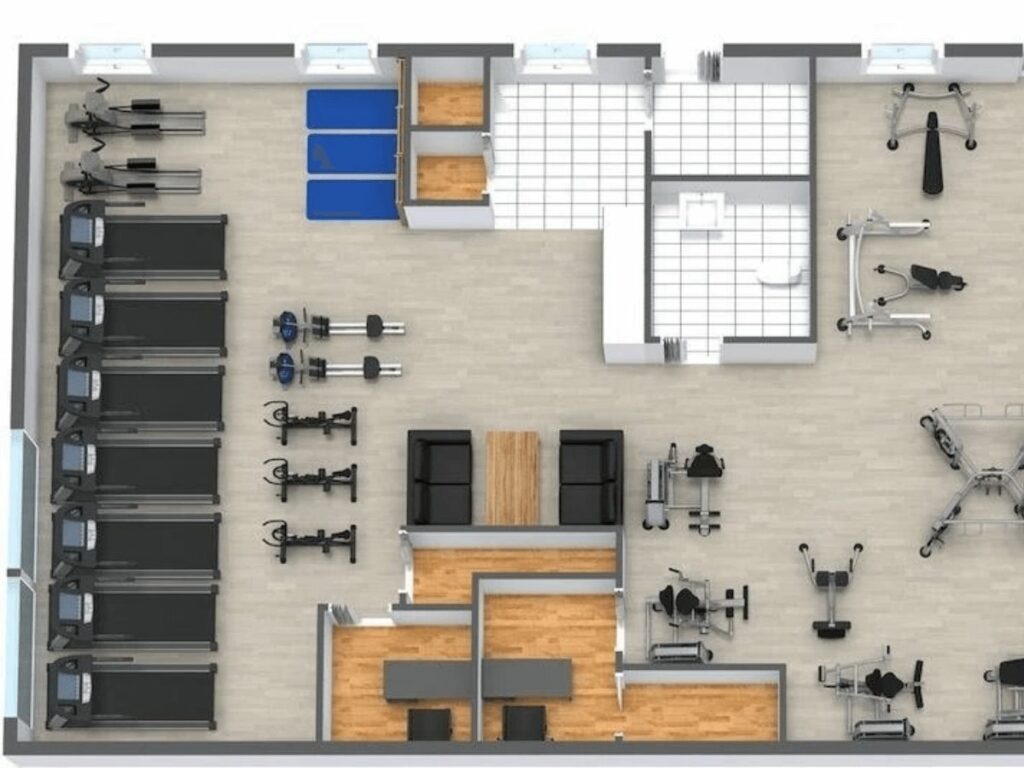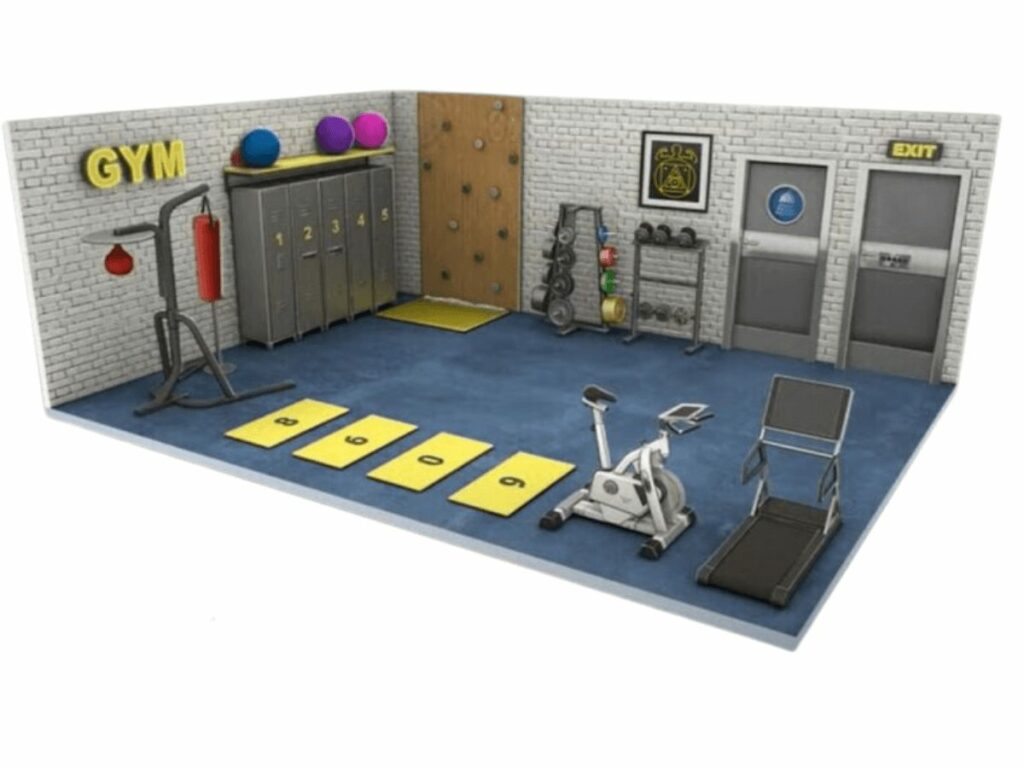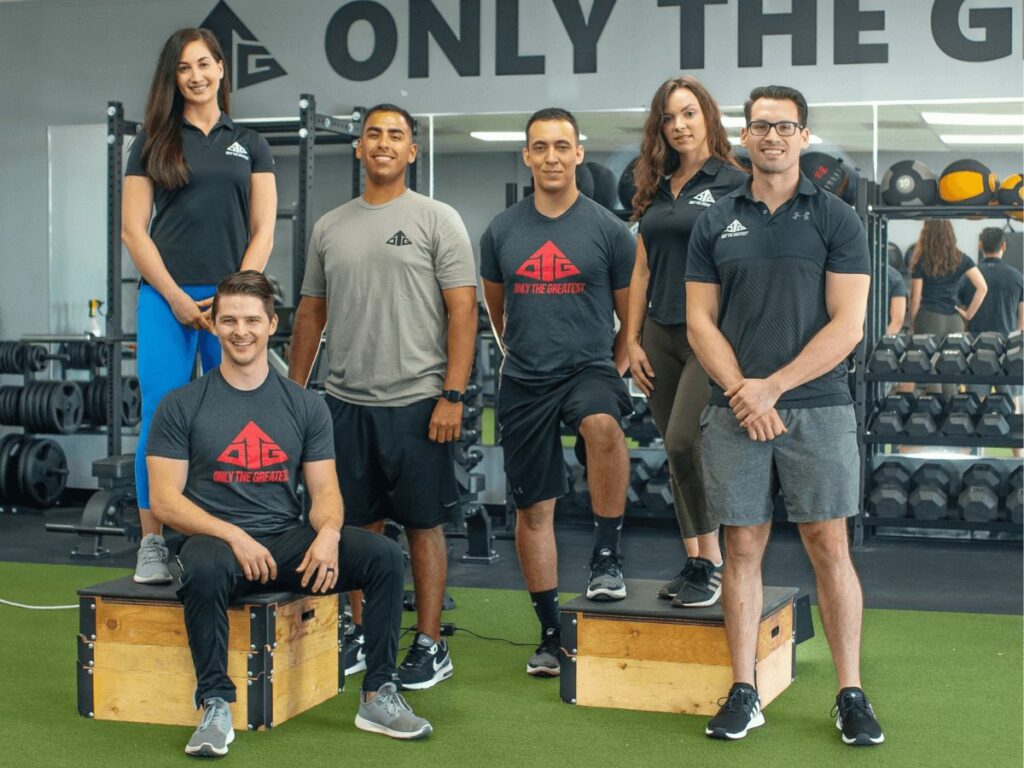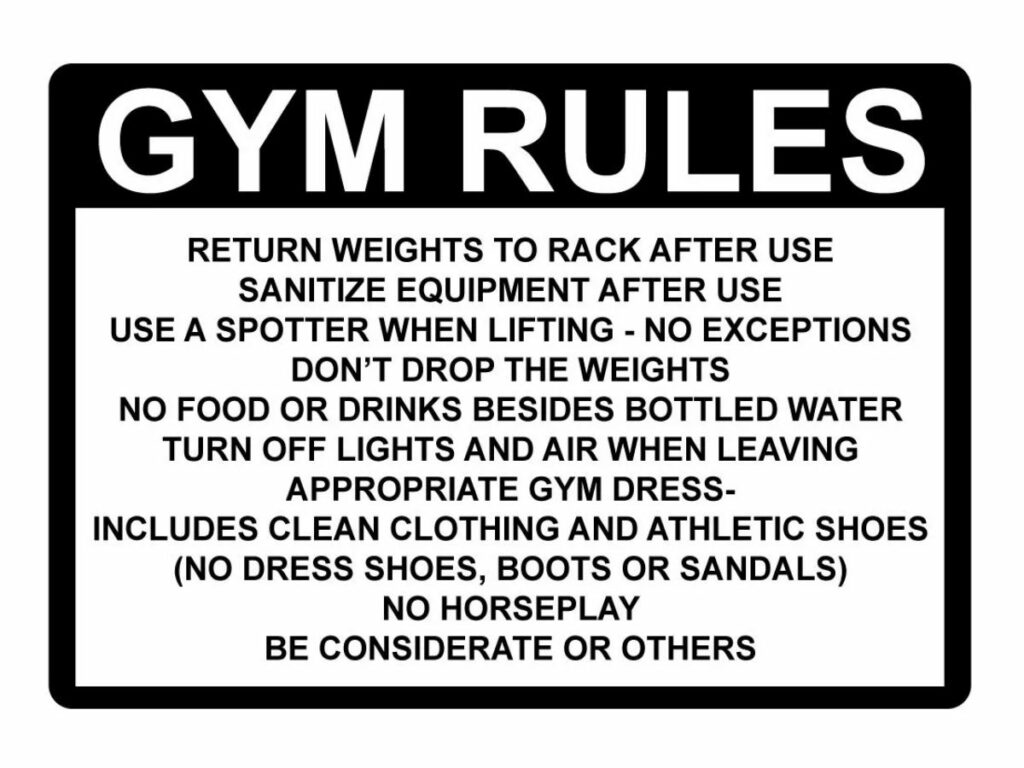Looking to establish a fitness center in your locality? You’re in luck because this guide has got you covered! I’ll take you through the vital steps required to launch and maintain a thriving gym business.
With a 9-step plan that covers everything from conducting market research to offering exceptional customer service, you’ll have all the insights and advice necessary to turn your gym vision into a reality.
So, let’s dive in and get started on building your dream gym!
Table of Contents
- 1. Step#1: Market Research and Business Planning
- 2. Step#2: Choosing a Location
- 3. Step#3: Gym Design and Layout
- 4. Step#4: Hiring and Training Staff
- 5. Step#5: Legal and Regulatory Compliance
- 6. Step#6: Marketing and Promoting Your Gym
- 7. Step#7: Managing Your Gym Operations
- 8. Step#8: Providing Exceptional Customer Service
- 9. Step#9: Measuring Success and Achieving Growth
- 10. Conclusion
1. Step#1: Market Research and Business Planning
Starting a gym begins with understanding your target market and planning your business accordingly. This step is crucial to ensure that you’re investing in the right location and services for your potential customers. Here are the steps you can follow to start a gym business:
Conducting Market Research
Conduct thorough market research to understand the demographics and fitness habits of the people in your target area. In my experience, using tools like surveys, focus groups, and analyzing competitor data can help you gauge the demand for your gym and identify potential gaps in the market.
Developing a Business Plan
A solid business plan is essential for guiding your gym’s growth and success. Your business plan should outline your gym’s mission, target market, revenue streams, marketing strategy, and financial projections. When I opened my gym, I found it helpful to consult with business experts to ensure that my plan was both realistic and comprehensive.
Funding Your Gym
Opening a gym requires significant capital investment. Consider various funding options such as bank loans, personal savings, or investment from family and friends. Having a well-thought-out business plan was essential for securing the necessary funds for my gym. Be prepared to present a detailed financial plan to potential investors, showcasing the potential return on investment and projected cash flow.
2. Step#2: Choosing a Location
The location of your gym is crucial to its success. According to an article, convenience is a major factor in gym-goer decision making, with 67% of respondents citing it as an important factor when choosing a gym. Read on to learn more about these critical steps to ensure your gym’s location is easily accessible, visible, and appealing to your target market.
Identifying a Suitable Location
When looking for a location for your gym, consider factors such as visibility, foot traffic, parking availability, and proximity to your target market. Being near complementary businesses, like health food stores and fitness studios, helped attract more customers to my gym. Research multiple locations, and weigh the pros and cons of each before making a decision.
Understanding Zoning Regulations
Before signing a lease, research local zoning regulations to ensure that your gym complies with all relevant laws. I made sure to consult with a local attorney to navigate the zoning regulations in my area. Zoning laws can vary greatly depending on the municipality, so it’s essential to have a clear understanding of the specific regulations that apply to your chosen location.
Negotiating a Lease Agreement
Once you’ve found the perfect location, negotiate the terms of your lease agreement. I recommend hiring a commercial real estate attorney to help you navigate the process and ensure that you get the best possible deal. Consider factors like lease length, rent increases, and potential tenant improvements when negotiating your lease.
3. Step#3: Gym Design and Layout
Creating an inviting and efficient gym environment is essential for attracting and retaining members. Here are some details to learn more about these critical steps to ensure that your gym provides the best possible experience for your members.
Designing the Gym Floor Plan
Your gym’s floor plan should optimize space utilization, accommodate various workout stations, and provide a comfortable atmosphere for your members. When I designed my gym, I included dedicated areas for cardio, strength training, group classes, and stretching. Consider hiring a professional gym design consultant to help you create an optimal layout that maximizes both functionality and aesthetics.
Below is a video of a gym tour where you can see how the equipment is properly arranged:

Selecting Gym Equipment
Invest in high-quality, durable gym equipment that caters to your target market’s fitness preferences. I chose to work with Yanre Fitness, a gym equipment manufacturer, to ensure that my gym had the best equipment for my members. Take the time to research and compare different equipment manufacturers, and consider factors like warranty, customer support, and product reviews when making your decision.
Creating a Comfortable and Safe Environment
Ensure that your gym is clean, well-lit, and equipped with safety features like emergency exits, fire extinguishers, and security cameras. I also made it a priority to create an inclusive and welcoming atmosphere for members of all fitness levels. Providing amenities like lockers, showers, and changing rooms can also contribute to a positive member experience.

4. Step#4: Hiring and Training Staff
Your gym staff play a vital role in creating a positive experience for your members and contributing to the success of your gym. In this section, we’ll explore the key considerations for identifying job roles and responsibilities, recruiting qualified personnel, and training your team.
Identifying Job Roles and Responsibilities
Determine the necessary staff positions for your gym, such as personal trainers, group fitness instructors, front desk staff, and maintenance personnel. Create clear job descriptions for each role to attract qualified candidates. Having a well-defined organizational structure can help streamline your hiring process and set expectations for new hires.
Recruiting Qualified Personnel
Attract and hire qualified staff by advertising job openings on industry-specific job boards and leveraging your professional network. I found that conducting thorough interviews and checking references helped me build a team of dedicated and skilled professionals. Consider offering competitive compensation packages to attract top talent in the fitness industry.
Training Your Team
Invest in the ongoing training and development of your staff to ensure they stay up-to-date with industry trends and best practices. The solution is simple, regular training sessions and workshops were crucial in maintaining a high level of service and expertise at my gym. Encourage your staff to pursue continuing education and certifications to further enhance their skills and knowledge.

5. Step#5: Legal and Regulatory Compliance
Complying with legal and regulatory requirements is essential to protect your gym business and ensure its longevity. Read on to learn more about these critical steps to help you stay in compliance and protect your gym business from legal and regulatory risks.
Registering Your Business
Choose an appropriate legal structure for your gym, such as a sole proprietorship, partnership, LLC, or corporation, and register your business with the relevant government authorities. I consulted with a business attorney to help me decide on the most suitable structure for my gym. Proper registration can protect you from personal liability and help establish credibility with potential clients and partners.
Obtaining Permits and Licenses
Research and obtain all necessary permits and licenses for your gym, such as a business license, building permits, and health department permits. Working closely with local government agencies and staying informed about any changes in regulations helped me keep my gym in compliance. Be prepared to undergo inspections and maintain detailed records of your compliance efforts.
Complying with Health and Safety Regulations
Ensure that your gym adheres to all health and safety regulations, including proper sanitation practices, adequate ventilation, and emergency response protocols. Regularly review and update your safety policies and procedures to minimize the risk of accidents and injuries. I made it a priority to conduct periodic safety audits and address any issues promptly.
6. Step#6: Marketing and Promoting Your Gym
Effectively marketing your gym is crucial for attracting new members and establishing your brand in the local fitness community. Learn more about these essential steps to help you effectively promote your gym, attract new members, and establish your brand in the local fitness community.
Creating a Brand Identity
Develop a unique and compelling brand identity for your gym. Working with a professional branding agency can help create a cohesive and appealing brand image that will resonate with your target audience. Here are some examples to develop a unique and compelling brand identity for your gym:
- Create a memorable logo that represents your gym and its values.
- Choose a color scheme that aligns with your gym’s personality and target audience.
- Craft a brand messaging that communicates your gym’s unique selling proposition (USP) and sets it apart from other gyms.
Developing a Marketing Strategy
Create a comprehensive marketing strategy that includes both online and offline tactics, such as social media marketing, search engine optimization (SEO), email campaigns, print advertising, and local event sponsorship. In my experience, the multi-channel approach was most effective in reaching my target audience and generating interest in my gym.
Launching Your Gym
To make a successful gym business, having quality gym equipment from manufacturers like Yanre Fitness is important, as well as organizing a grand opening event to showcase your gym and generate buzz in the local community. I found that offering special promotions, giveaways, and free trial memberships during my gym’s launch, coupled with high-quality gym equipment, helped attract a surge of new members.
Collaborating with local businesses and influencers can also help increase your event’s reach and visibility, which can lead to increased brand awareness and business growth.
7. Step#7: Managing Your Gym Operations
A report by High Speed Training emphasizes the importance of developing policies and procedures to promote safety and minimize risk in fitness facilities. In this section we’ll explore the key considerations for developing gym policies and procedures, managing finances and accounting, and maintaining and upgrading gym equipment.
Developing Gym Policies and Procedures
Create clear and comprehensive policies and procedures for your gym, covering topics like membership terms, payment procedures, cancellation policies, and member conduct. Having well-documented policies in place helped minimize disputes and streamline my gym’s operations.

Managing Finances and Accounting
Implement a robust financial management system to track your gym’s revenue, expenses, and cash flow. I recommend working with a professional accountant to ensure that your financial records are accurate and up-to-date. Regular financial analysis can help you identify areas for improvement and guide your decision-making.
Maintaining and Upgrading Gym Equipment
Regularly inspect, maintain, and upgrade your gym equipment to ensure optimal performance and safety. I know you will agree with me when I say that investing in preventative maintenance helped reduce costly repairs and extend the lifespan of my gym equipment. Monitor industry trends and consider upgrading or adding new equipment to keep your gym fresh and appealing to members.
8. Step#8: Providing Exceptional Customer Service
Exceptional customer service is crucial for building and maintaining a loyal member base. Read on to learn more about these essential steps to help you create a positive and supportive environment that keeps your members coming back.
Understanding Your Customers’ Needs
Take the time to understand your members’ fitness goals, preferences, and challenges. A survey conducted by Retail Customer Experience found that 63% of today’s consumers expect personalization as a standard of service. Regularly soliciting feedback and engaging with members on a personal level helped me tailor my gym’s offerings to better meet their needs.

Providing Excellent Customer Service
Empower your staff to deliver outstanding customer service by providing them with the necessary training, resources, and support. I found that fostering a customer-centric culture at my gym resulted in higher member satisfaction and retention rates.
Building Customer Loyalty
Implement strategies to build customer loyalty, such as offering rewards programs, hosting member appreciation events, and providing personalized workout guidance. The solution is simple, consistently exceeding member expectations and creating a sense of community helped turn my gym members into brand advocates.
9. Step#9: Measuring Success and Achieving Growth
Regularly evaluating your gym’s performance and making data-driven decisions can help you achieve long-term growth and success. In this section, we’ve explored the key considerations for tracking performance metrics, evaluating and improving operations, and expanding your gym business.
Tracking Performance Metrics
Identify key performance indicators (KPIs) for your gym, such as membership growth, revenue, retention rate, and class attendance. According to Zen Planner, tracking KPIs can help gym owners and managers make informed business decisions.
Tracking these key performance indicators shown in the table below allows gym owners and managers to evaluate the overall health and success of their business. By monitoring metrics such as membership growth, revenue, retention rate, class attendance, member engagement, and customer satisfaction, you can make data-driven decisions to improve operations, marketing strategies, and customer experience.
| Performance Metric | Description |
| Membership Growth | Track the number of new members joining your gym over a specific period. This metric helps assess the effectiveness of your marketing and sales efforts in attracting new customers. |
| Revenue | Monitor the total revenue generated by your gym, including membership fees, personal training sessions, and any additional services or products offered. |
| Retention Rate | Calculate the percentage of members who continue to renew their memberships over a specific period. A high retention rate indicates customer satisfaction and loyalty. |
| Class Attendance | Measure the average attendance rate for classes offered at your gym. This metric reflects the popularity and success of your classes and helps identify areas for improvement. |
| Member Engagement | Assess the level of member engagement through metrics like participation in gym challenges, social media interactions, and feedback received. |
| Customer Satisfaction | Collect feedback from members through surveys or ratings to gauge their satisfaction levels. This metric helps identify areas where improvements or adjustments may be needed. |
Evaluating and Improving Operations
Continuously evaluate and refine your gym’s operations, policies, and offerings based on member feedback and performance data. I found that adopting a mindset of continuous improvement helped me keep my gym competitive and responsive to changing market conditions.
Expanding Your Gym Business
Once your gym is well-established and profitable, consider opportunities for expansion, such as opening additional locations, franchising, or offering new services. Similarly, carefully planning and executing growth initiatives helped me build a thriving gym business.
Here are some examples to expand your gym business:
- Open additional locations in areas with high demand for fitness services.
- Franchise your gym to replicate your business model and brand identity in new markets.
- Offer new services that cater to your customers’ evolving needs and preferences.
10. Conclusion
Opening a gym in your area can be a rewarding and profitable venture, but it requires careful planning, dedication, and hard work. By following this 9-step guide, you’ll be well-equipped to navigate the challenges and opportunities that come with starting a gym business and understanding what do you need to open a gym.
If you’re looking for high-quality gym equipment to kickstart your gym, I recommend partnering a reputable gym equipment manufacturer. Yanre Fitness offers a wide range of equipment to cater to the diverse needs of your members and help create an exceptional workout experience. To learn more about our products and services, contact us today and take the first step toward building a successful gym business.
Related articles:








